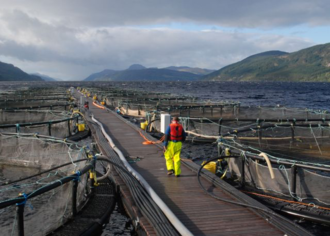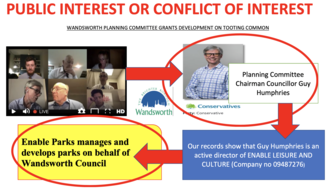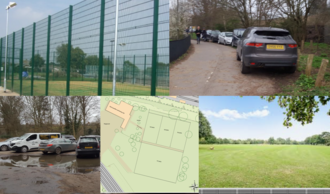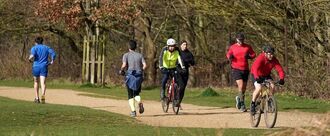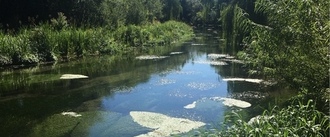-
Keep road verges uncutResearch has shown that uncut grass supports higher numbers of insects and invertebrates, which are a food source for birds and small mammals, therefore increasing biodiversity. Furthermore, wild areas full of flowers also support emotional well-being and can reduce stress levels.104 of 200 SignaturesCreated by Josine Atsma
-
Close Dove Stone reservoir to the public until serious issues are resolvedThis is an area of great conservational importance. The moorland is an essential part of our eco-system and a vital sanctuary for wildlife and people alike. Unfortunately, over recent years, it has attracted large numbers of visitors, including some who unfortunately have little regard for the environment. As a result, many local people do not go at all any more. We want people to use, not abuse our precious landscape.3,526 of 4,000 SignaturesCreated by Helen Bishop
-
Stop Toxic Salmon Farm Chemicals Polluting Scottish LochsMore than 22 tonnes of formaldehyde, which causes cancer and is used as an embalming fluid, were poured into cages to disinfect salmon in Loch Ness, Loch Sheil, Loch Lochy and seven other lochs over nine months in 2019. Residents of Lochaber and elsewhere in the Highlands are rightly worried as many of these lochs feed public water supplies. Formaldehyde is a colourless, strong-smelling gas used in a liquid solution called formalin to treat farmed salmon in freshwater lochs. SEPA, which authorises its use, says that uncontrolled releases “have the potential to cause significant harm to the environment”. The chemical was classified as a human carcinogen by the UK government in 2016. New data released by Sepa disclosed that a total 22.4 tonnes of formaldehyde were used by 12 fish farms on 29 occasions between April and December 2019. Seven companies were given permission to apply the chemical, with the vast majority – 19.6 tonnes – being used by Norwegian-owned Mowi, formerly known as Marine Harvest. At one loch – Loch Lochy, near Spean Bridge – Mowi used 11 tonnes of formaldehyde – far more than elsewhere. The company poured 3.2 tonnes into fish cages at nearby Loch Arkaig, 2.8 tonnes at Loch Sheil in Glenfinnan and 2.2 tones at Camas na Mult on Loch Ness. https://bit.ly/fish_farm_pesticide10,468 of 15,000 SignaturesCreated by Healthy Scotland
-
A Common Scandal: How Wandsworth Puts Public Land In Private HandsWandsworth Borough Council failed to adequately inform and consult the public of this development. It sent out just 34 letters to local residents, despite a thousand registering their concern to a similar plan in 2008. It omitted to mention the land will become the base for a football club, who play at a semi-professional level and have a total of 28 teams. The chairman of the planning committee which considered the application is also a director of Enable, the organisation responsible for the management of leisure and sports services in Wandsworth. The chairman closed down debate at the meeting; allowing a supportive letter from the football club to be read out, but rejecting a short submission on behalf of almost 7,000 local residents against the development and failing to refer to an unprecedented 1,000 formal objections from the public. The committee failed to call for a traffic and parking impact report, despite the issue being of significant concern in the area, where there is no dedicated parking. Residents were not informed that a community boxing club which was expected to be upgraded as part of the development would instead lose space and may now face closure. REJECT this application: it is not supported by the public. Planning applications must not only be fair, they must be seen to be fair, especially when they relate to common land.2,140 of 3,000 SignaturesCreated by Ben Jackson
-
TORFAEN COUNCIL, STOP USING GLYPHOSATEGlyphosate-based herbicides such as RoundUp pose a real risk to the public, our environment and workers. Glyphosate has been banned in Holland, Denmark, Sweden and France and by some Councils around the UK such as Trafford, Brighton, Bristol and Croydon. B & Q are ceasing sale of Round-Up following links to cancer in the US. Roundup kills beneficial insects. It has been proven to cause mortality of species including bees, predatory mites, lacewings, ladybirds and predatory beetles. Argentinian studies suggest that glyphosate use leads to a decline in honeybee activity. The demise of the monarch butterfly population in New York has been blamed on glyphosate. Glyphosate in soil takes approx 140 days to break down to half its toxicity and will continue to be taken up by plants from the soil for 2 years and longer. It’s toxic to earthworms and inhibits mycorrhizal fungi. Mycorrhizal fungi are essential for tree health, collecting nutrients and water to feed their host plant and protecting tree roots from harmful fungi and root rot diseases. Research on Cancer (IARC) concluded that it was “probably carcinogenic”. A court case against Monsanto was won by a man who developed cancer after using Roundup. He was awarded $289 million in damages. Other councils now use eco-friendly alternatives such as non-toxic Foamstream. Methods such as Mesh-Tech are now also available to combat Japanese Knotweed. This petition is supported by Independent (non group) Cllrs Elizabeth Haynes, Dave Thomas, Alan Slade, Jason O'Connell & Louise Shepphard.226 of 300 SignaturesCreated by Elizabeth Haynes
-
WSCC Pensions to divest from fossil fuels and invest in sustainable energyWe are asking WSCC council pension funds to commit to divest all their funds from fossil fuel companies. Divestment is the opposite of investment – it means getting rid of stocks, bonds or investment funds that are unethical. More than 50 pension funds globally have now made divestment commitments, moving millions out of the fossil fuel industry. However, despite years of campaigning by local people and motions passed by both Adur & Worthing Borough Councils urging them to divest (https://worthingandadurchamber.co.uk/news-blog/8638924) WSCC pensions will not budge. The West Sussex Local Government Pension Fund, currently responsible for the pension benefits of thousands of us, continues to invest millions in fossil fuel companies. In December 2015 the UK signed up to the Paris Agreement. One of the main aims was to limit global warming to under 2 degrees C. The overriding cause of climate change is CO2 gas emitted from burning fossil fuels (coal, oil and gas). Only 20% of present reserves of fossil fuels can be burnt if we are to keep to the target set in Paris. However, companies such as Exxon, Shell, BP continue to extract existing reserves and pour millions into new projects. The scientific consensus tells us that if we continue on our current course the earth will heat to a level which is beyond that required to sustain life. Heatwaves and wildfires, in the UK and globally, plus the accelerating loss of biodiversity, demonstrate that climate change is already here and is causing the deaths and displacement of millions of people worldwide. David Attenborough said, “What humans do over the next 50 years will determine the fate of all life on the planet.” Please sign the petition to urge WSCC Pensions to divest from Fossil Fuels. [The fossil fuel portfolio could be easily reinvested in green alternatives and get better returns]. (https://www.divest.org.uk/councils/) More: In the UK there are over 30 divestment campaigns targeting local councils and the pension funds they manage. Find more out about the campaign here. https://gofossilfree.org/uk/local-government-guide/ New Government proposals, published on June 18th 2018, are designed to give managers of Britain’s workplace pension schemes new powers to dump shares in oil, gas and coal companies in favour of long-term investment in green and “social impact” opportunities. Pension fund trustees now should have more confidence to divest from fossil fuels and put their cash in green alternatives. As a member of the West Sussex Pension Scheme I urge you to sign our petition to request WSCC to rapidly divest from this industry and invest in technologies and solutions that make a positive contribution to the future of life on earth. Local government Pension Funds are failing to protect themselves from the financial risk of climate. These are the findings of a report in November 2018 (https://cdn.friendsoftheearth.uk/sites/default/files/downloads/Risky-Business-LG-Pension-Funds-Climate-Crisis.pdf) https://gofossilfree.org/divestment/what-is-fossil-fuel-divestment/ https://www.theguardian.com/public-leaders-network/2017/nov/13/southwark-council -pension-fund-divesting-12bn-from-fossil-fuels https://www.unison.org.uk/content/uploads/2018/01/Divest-from-carbon-campaign.pdf Campaign supported by WorthingCAN, XR Worthing, XR Chichester, XR Shoreham, XR Horsham and XR Arun Valley.385 of 400 SignaturesCreated by Amberlouise Everitt
-
Permanent closure of the road at the East entrance of Drumpellier Country ParkThe East entrance of Drumpellier Country Park has been closed to cars and unauthorised vehicles for the past few weeks due to the pandemic. As a result, the road and surrounding areas have been much safer and much more enjoyable for children, families, cyclists, joggers, dog walkers and of course the habitual wildlife in the park. The Country Park is an area of natural beauty, which had been spoiled by cars accessing the park via this road. More litter is brought and dropped by car users, exhausts pollute the environment, cars park in passing places, cars park on the road beside the football pitches to collect children from St. Ambrose/Buchanan High and drivers going too fast also pose significant risks to the abovementioned groups. Once lockdown restrictions are gradually eased and people are once again allowed to drive to local nature spots, I passionately believe that visitors to the loch and wider Country Park can and should use the visitor centre car park, which has ample space and is specifically designed to accommodate visitors with cars. There is no valid reason for vehicles other than waste disposal, authorised council vehicles and a park resident's authorised vehicle to access the park via the road entrance at the East. Instead the road at the East entrance to the Country Park should be preserved as a safe environment in which people can be encouraged to continue walking, cycling, running and scooting and in which children and wildlife will be safe.113 of 200 SignaturesCreated by Karen Trofimova
-
COVID -19 Safer Streets in WinchesterAs lockdown is eased we must ensure the safety of pedestrians and cyclists is the top priority in Winchester’s recovery from COVID-19. Numerous studies have demonstrated that increased pedestrianisation leads to higher footfall meaning that local businesses could also benefit from these measures.* Winchester has some of the narrowest pavements in Hampshire, therefore reallocation of roads for pedestrians and cyclists is the only way to maintain 2 metre physical distancing. In the longer term, these arrangements will also prevent the return of dangerous levels of pollution in our city, reduce CO2 emissions, and encourage high levels of walking and cycling. Please refer to Cycling UK for FAQs: https://tinyurl.com/ycqwsky9 *TfL: https://tinyurl.com/ya8wvy59 ------------- Have you signed our Safer Streets petition but want to do even more? Use our fast, secure form to message your county councillor asking for change too: https://tinyurl.com/y92anpsv819 of 1,000 SignaturesCreated by Extinction Rebellion Winchester

-
Stop The Commercialisation Of Tooting Common* The development will destroy the environment of one of the remaining green spaces in London not bounded by roads. * It will not be freely accessible to the public: It will be privately run and let out on a pay to play basis and stretch over 80 yards across the common. * There will be a substantial increase car parking and congestion - with the entrance to the common used day and night by a football club who play in a semi-professional league and recruit players from across South London. We ask you to reject this proposal and respect the sanctity of Tooting Common, both for its natural environment and as an area that is open and can be enjoyed by all. NB: The virtual planning meeting will be held at 7:30pm on Tuesday, 19th May, 2020. Details will be issued on: https://democracy.wandsworth.gov.uk/ieListDocuments.aspx?MId=6509&x=17,837 of 8,000 SignaturesCreated by Ben Jackson
-
No more cars in Richmond Park - Except blue badge owners to use car-parksFor our health, for the bio-diversity, for our security, for Environmental issues, for the animals living in this Park, for the Eco-system, and much more! . It is about time that we change this, and for good.128 of 200 SignaturesCreated by Jean-Paul Lemiere
-
Protect the River Lambourn, one of only 4 chalk streams in the world accorded SSSI and SAC statusThe River Lambourn is one of only 4 chalk streams in the world accorded the highest protection of SSSI and SAC status. We cannot create any more. It is far more important to protect this river than a small piece of greenbelt. Developer, local residents, experts and those supporting our environment want this to happen. There is significant justification for an exception to be made in this case to the planning guidance. There is only one chance to protect the river.1,226 of 2,000 SignaturesCreated by Kirsteen Roberts
-
Wildflower verges and hedges for DevonDevon County Council should issue environmental guidance for all towns, parishes and landowners to stop the constant mowing, strimming, flailing and pesticide spraying carried out all over the county in the name of 'tidiness'. Devon County Council should ensure that all Devon hedges, banks and verges are treated as wildlife and wildplant havens and cared for as a precious environmental resource. At first glance, Devon looks green and thriving but the hedges are flailed to extinction, the fields are monocultures of grass, the verges cut indiscriminately. Devon is a largely rural county and has a huge role to play in increasing environmental diversity and preventing the decline and destruction of nature. Most individuals and organisations that own or manage the natural landscape in Devon do so for reasons other than to care for nature. We urgently need strong policy and guidance from the County Council to to prevent the ongoing decline and disappearance of native species. We need strong leadership and sanctions to give nature a chance. The way the natural environment is managed can be so much better, if only we had proper guidance from those who have the power to make this change.2,134 of 3,000 SignaturesCreated by Lynn Daniel
Hello! We use cookies to improve your experience by providing insights into how the site is being used. Find out more.
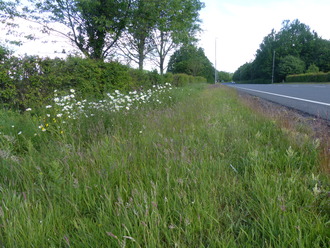
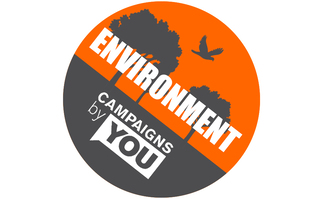.jpg20200603-26959-1aoxfh.jpg)
